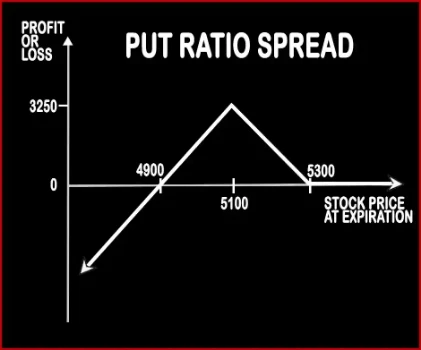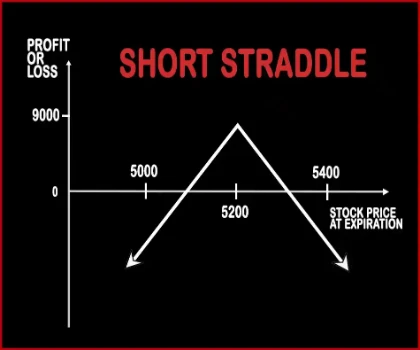Compare Strategies
| RATIO PUT SPREAD | SHORT STRADDLE | |
|---|---|---|

|

|
|
| About Strategy |
Ratio Put Spread Option StrategyThis strategy involves buying ITM Puts and simultaneously selling OTM Puts, double the number of ITM Puts. This strategy is used by a trader who is neutral on the market and bearish on the volatility in the near future. Here profits will be capped up to the premium amount and risk will be potentially unlimited. |
Short Straddle Option strategyThis strategy is just the opposite of Long Straddle. A trader should adopt this strategy when he expects less volatility in the near future. Here, a trader will sell one Call Option & one Put Option of the same strike price, same expiry date and of the same underlying asset. If the stock/index hovers around the same levels then both the options will expire worthless an .. |
RATIO PUT SPREAD Vs SHORT STRADDLE - Details
| RATIO PUT SPREAD | SHORT STRADDLE | |
|---|---|---|
| Market View | Neutral | Neutral |
| Type (CE/PE) | PE (Put Option) | CE (Call Option) + PE (Put Option) |
| Number Of Positions | 3 | 2 |
| Strategy Level | Beginners | Advance |
| Reward Profile | Limited | Limited |
| Risk Profile | Unlimited | Unlimited |
| Breakeven Point | Upper Breakeven Point = Strike Price of Long Put +/- Net Premium Received or Paid, Lower Breakeven Point = Strike Price of Short Puts - (Points of Maximum Profit / Number of Uncovered Puts) | Lower Breakeven = Strike Price of Put - Net Premium, Upper breakeven = Strike Price of Call+ Net Premium |
RATIO PUT SPREAD Vs SHORT STRADDLE - When & How to use ?
| RATIO PUT SPREAD | SHORT STRADDLE | |
|---|---|---|
| Market View | Neutral | Neutral |
| When to use? | This strategy is used by a trader who is neutral on the market and bearish on the volatility in the near future. | This strategy is work well when an investor expect a flat market in the coming days with very less movement in the prices of underlying asset. |
| Action | Buy 1 ITM Put, Sell 2 OTM Puts | Sell Call Option, Sell Put Option |
| Breakeven Point | Upper Breakeven Point = Strike Price of Long Put +/- Net Premium Received or Paid, Lower Breakeven Point = Strike Price of Short Puts - (Points of Maximum Profit / Number of Uncovered Puts) | Lower Breakeven = Strike Price of Put - Net Premium, Upper breakeven = Strike Price of Call+ Net Premium |
RATIO PUT SPREAD Vs SHORT STRADDLE - Risk & Reward
| RATIO PUT SPREAD | SHORT STRADDLE | |
|---|---|---|
| Maximum Profit Scenario | Strike Price of Long Put - Strike Price of Short Put + Net Premium Received - Commissions Paid | Max Profit = Net Premium Received - Commissions Paid |
| Maximum Loss Scenario | Strike Price of Short - Price of Underlying - Max Profit + Commissions Paid | Maximum Loss = Long Call Strike Price - Short Call Strike Price - Net Premium Received |
| Risk | Unlimited | Unlimited |
| Reward | Limited | Limited |
RATIO PUT SPREAD Vs SHORT STRADDLE - Strategy Pros & Cons
| RATIO PUT SPREAD | SHORT STRADDLE | |
|---|---|---|
| Similar Strategies | Short Straddle (Sell Straddle), Short Strangle (Sell Strangle) | Short Strangle |
| Disadvantage | • Unlimited potential risk. • Limited profit. | • Unlimited risk. • If the price of the underlying asset moves in either direction then huge losses can occur. |
| Advantages | • Directional strategy so that there is either no upside or downside risk. • Able to profit even if trader is neutral on the market. • Higher probability of profit. | • A trader can earn profit even when there is no volatility in the market . • Allows you to benefit from double time decay. • Trader can collect premium from puts and calls option . |